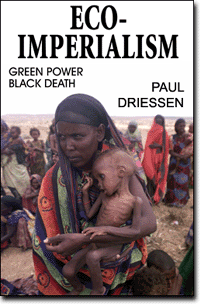Who pays?
by Paul K. Driessen
Maui News
April 2004
Last summer’s long anticipated trip to Hawaii left me captivated by its magnificent mountains, beaches, flora, agriculture and people. Intrigued by its politics as well, I began to follow policy debates over certain environmental matters.
The growing clamor over agricultural biotechnology seems out of place in a state that has long been the source of miraculous innovation – indeed is the cradle of the global breadbasket. A resolution asking the state to establish local advisory boards, coupled with comments by Maui District Health Officer Dr. Lorrin Pang and others, reflect troubling misconceptions that are driving undeserved support for this resolution.
Dr. Pang, for instance, stated that the Food and Drug Administration “mandates local approval of clinical research by local review boards.” It does not, although for studies of certain FDA-regulated products, the agency does require review and approval by “institutional review boards” composed of experts from various fields.
Concerns about the safety of genetically modified (GM) crops for humans and the environment have been coupled with assertions that “very few studies” have been conducted, and there are “no data showing safety.” In fact, extensive regulations govern every phase of biotech crop development and production, often requiring expensive case-by-case reviews that many scientists criticize as disproportionate to the actual risks involved. Numerous studies have been conducted, and biotech corn and soybeans have been consumed for years with no ill effects.
Many of the specific statements of concern reflect claims by well-funded anti-biotech groups that, according to the Wall Street Journal, intend to spend $175 million over the next 5 years battling this technology – on top of the $500 million they spent between 1995 and 2000. Much of this funding comes from major foundations like Ford, Pew, MacArthur and Packard, and from organic food companies that expect to increase their own market share at the expense of biotech producers.
The notion that “no one can seriously claim caution is a hindrance” is equally erroneous. Caution is necessary, and indeed is the foundation of our regulatory system. But over-caution imposes delays and exacts a price. The questions are: how high a price, and who pays?
For Hawaii, the price of obstructing or delaying the benefits of biotechnology would be measured in lost jobs, revenues and innovation – and more extensive use of fertilizers, pesticides and herbicides than would be the case with GM crops. For people in developing countries, the price would be far higher.
Nearly 14 million people face starvation in southern Africa alone. Worldwide, 800 million are chronically undernourished. Some 740 million people go to bed every night on empty stomachs – and nearly 30,000 (half of them children) die every day of malnutrition and starvation.
Over 200 million children suffer from Vitamin A Deficiency. Up to 500,000 of them go blind from it every year – and 2 million a year die from malaria, lung infections, dysentery and other diseases they would survive, if they weren’t so malnourished.
Biotechnology could fortify plants with vitamins, to reduce malnutrition and blindness. Genetically engineered Golden Rice is rich in beta-carotene, which humans can convert to vitamin A, to prevent blindness and save lives. Just one and a half ounces a day will do – not the 4 pounds that anti-biotech activists like Jeremy Rifkin and Greenpeace claim they would need.
Genetic engineering can also produce plants that fight off insects and viruses, and grow with little water, or in saline or nutrient-poor soils. It can replace crops devastated by disease and drought, and enable poor African, Asian and Latin American farmers to grow more crops on less land, earn a profit, and compete with European and American farmers, who get over $300 billion a year in subsidies.
Dr. Pang is correct on one score: “One person’s idea of benefit is another person’s idea of risk.” These destitute people desperately need a precautionary principle that safeguards them from real, immediate, life-threatening risks – instead of condemning them to squalor and premature death, to protect Americans and Europeans from minor, hypothetical health or environmental risks.
Unfortunately, the GM-phobic groups that originate much of the misinformation about biotechnology do not wish merely to have “input” or make these crops safer. Some will not be satisfied even if biotech products are deemed guilty until proven innocent beyond a reasonable doubt. Like Greenpeace, they are determined to stop at nothing less than the “complete elimination” of all biotech products from the food chain and environment. For them, the health, nutrition and welfare of the Earth’s most powerless and impoverished people does not appear to be a serious consideration.
These sobering realities should be on everyone’s mind as they debate – and hopefully reject – the advisory board resolution.
